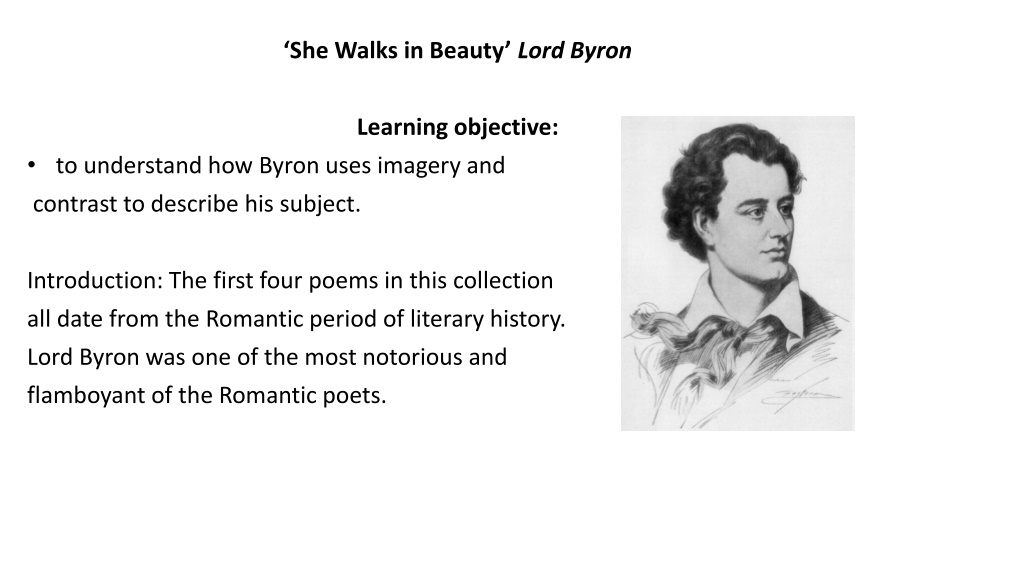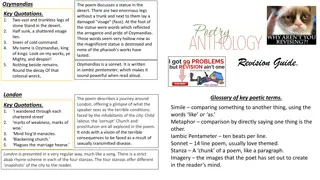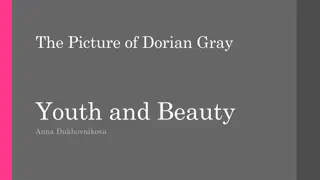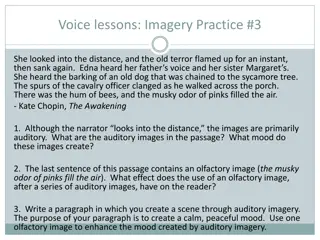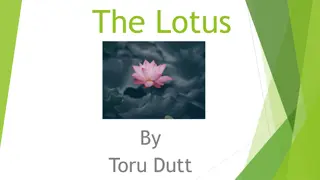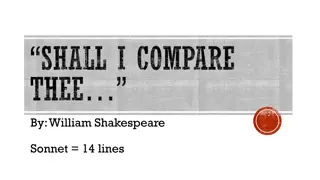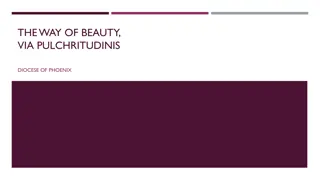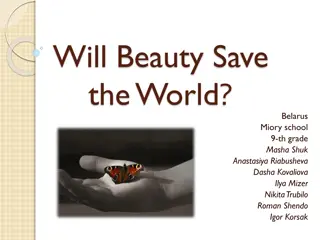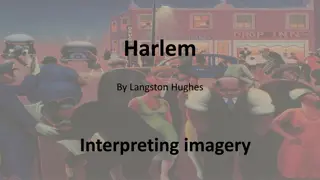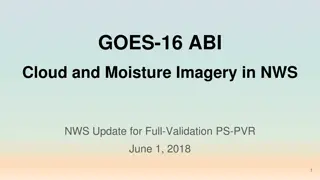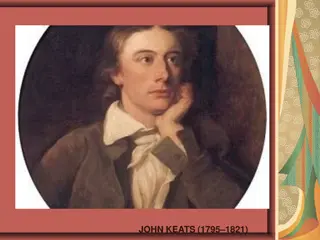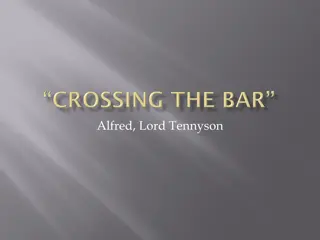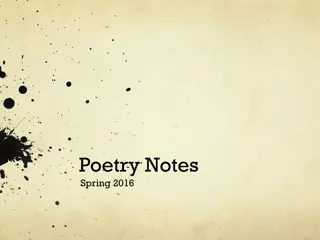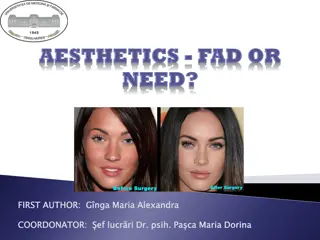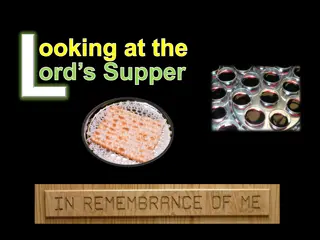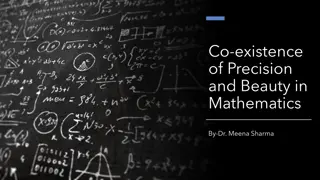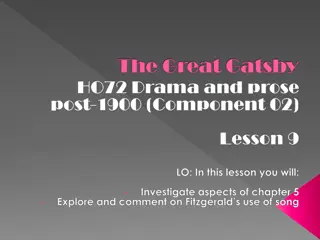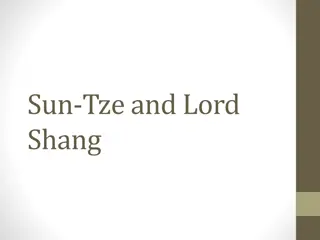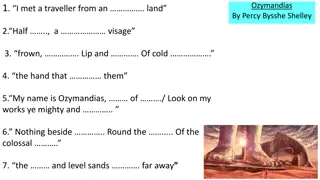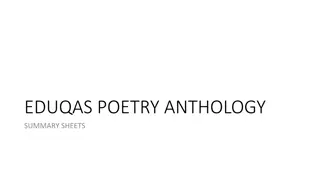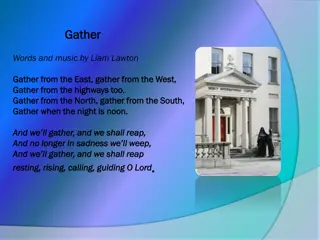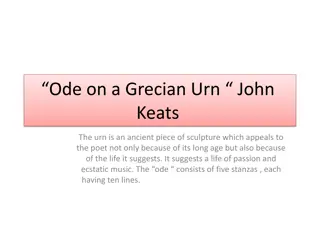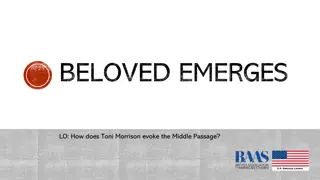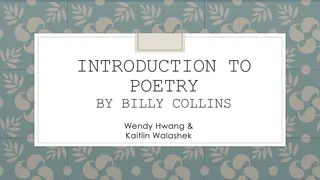Understanding Lord Byron's Use of Imagery in "She Walks in Beauty
Lord Byron, a prominent Romantic poet, utilized vivid imagery and contrast in his poem "She Walks in Beauty" to describe his subject. His life and poetic intentions reflect the Romantic ideals of emotion over reason. The poem, part of the collection "Hebrew Melodies," was meant for musical adaptation, showcasing the prioritization of emotion in Romantic literature.
Download Presentation

Please find below an Image/Link to download the presentation.
The content on the website is provided AS IS for your information and personal use only. It may not be sold, licensed, or shared on other websites without obtaining consent from the author. Download presentation by click this link. If you encounter any issues during the download, it is possible that the publisher has removed the file from their server.
E N D
Presentation Transcript
She Walks in Beauty Lord Byron Learning objective: to understand how Byron uses imagery and contrast to describe his subject. Introduction: The first four poems in this collection all date from the Romantic period of literary history. Lord Byron was one of the most notorious and flamboyant of the Romantic poets.
She Walks in Beauty Lord Byron Learning objective: to understand how Byron uses imagery and contrast to describe his subject. Byron s life Born 1788, died 1824 Like Shelley and Coleridge, Byron was a Romantic poet, focusing on emotion and sentiment in reaction against the logic and reason that was rising to prominence across Europe with a surge in scientific research and rationalism. The Romantics formed a political and social movement that rallied against the emotionless path they felt many were taking. Byron was a man who was scandalously renowned in his day for the many lovers he had, of both sexes. To many, he came to represent the Gothic anti-hero: mad, bad and dangerous to know . This was one reason why he left England for foreign shores in 1816. As an aristocrat of independent wealth, Byron enjoyed travelling. He lived in Italy for seven years before joining the Greeks fight for independence against the Ottoman Empire. It was while fighting in Greece that he caught the fever that would kill him at the age of just 36.
She Walks in Beauty Lord Byron Learning objective: to understand how Byron uses imagery and contrast to describe his subject. You could add that this poem, She Walks in Beauty , like the others in Byron s collection, Hebrew Melodies, was intended to be set to music and is thus a lyric poem . It is a good example of emotion taking precedence over rational thought.
She Walks in Beauty Lord Byron Learning objective: to understand how Byron uses imagery and contrast to describe his subject. Describe your ideal person to love to the person in one paragraph. Did you put many physical features above personality?
She Walks in Beauty Lord Byron Learning objective: to understand how Byron uses imagery and contrast to describe his subject. Read the poem on page 8 of the Poetry Anthology while listening to Audio A3. Attached. Identify the regular rhyme scheme and rhythm. You should also be able to identify the form. Have a look at the next slide to see if you were right.
She Walks in Beauty Lord Byron Learning objective: to understand how Byron uses imagery and contrast to describe his subject. Regular rhyme scheme (ABABAB) and rhythm (iambic tetrameter). Sestet form. iambic a verse form with four feet (or tetrameter pairs of syllables) in a line Sestet - a stanza of six lines
She Walks in Beauty Lord Byron Learning objective: to understand how Byron uses imagery and contrast to describe his subject. Development: What are your first impressions of the woman being described? Why does the poet compare her to both dark and light? Highlight the poem to identify contrasting features of the woman s beauty. Is her beauty merely skin deep, or is there something more that Byron discerns in her? Write your own short description of the woman in the poem. Use a thesaurus to find synonyms of words that describe her.
